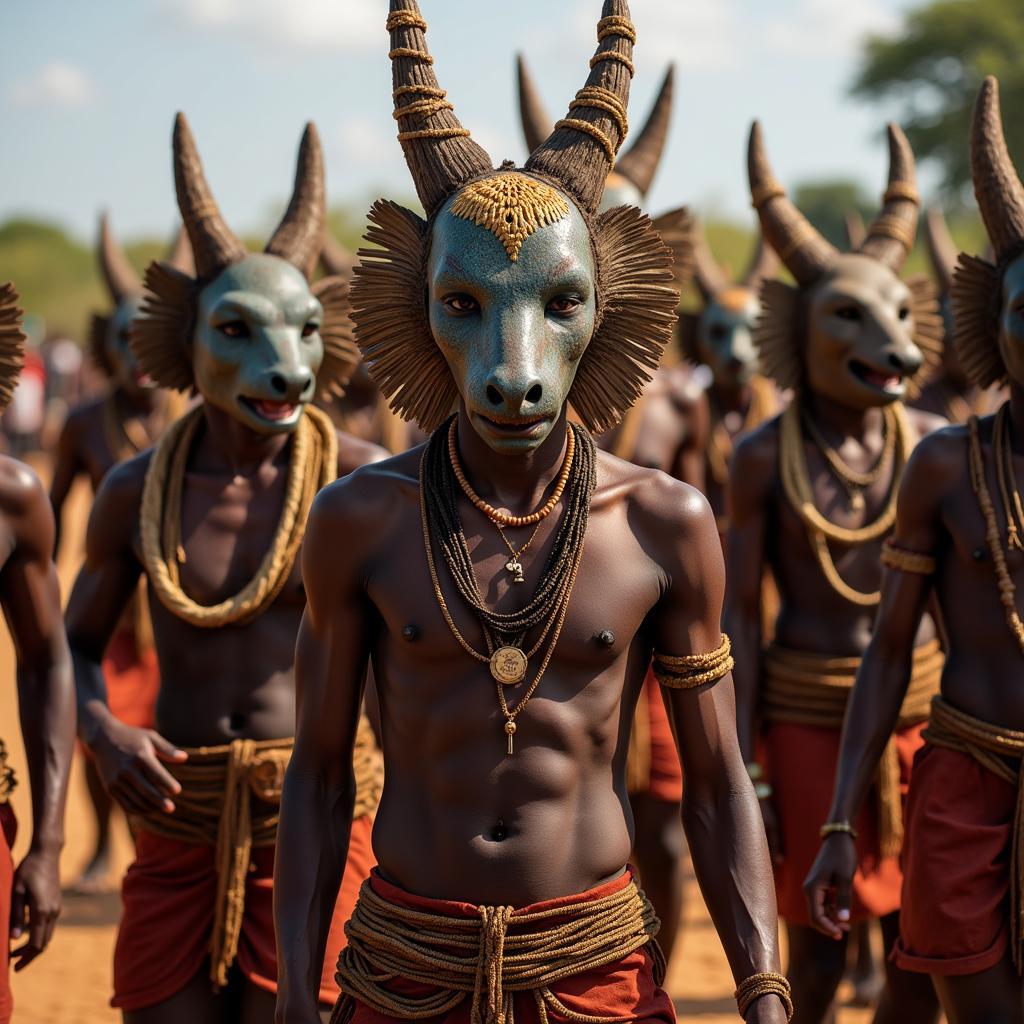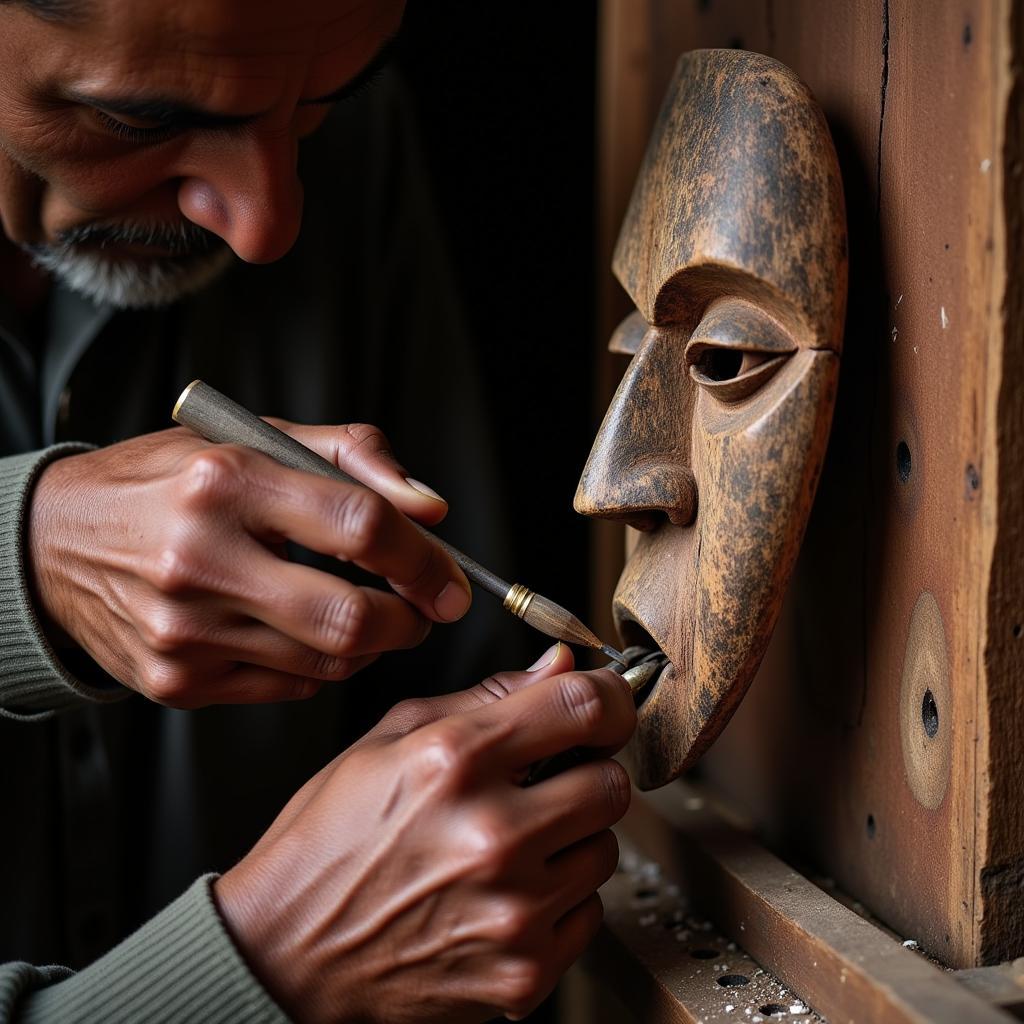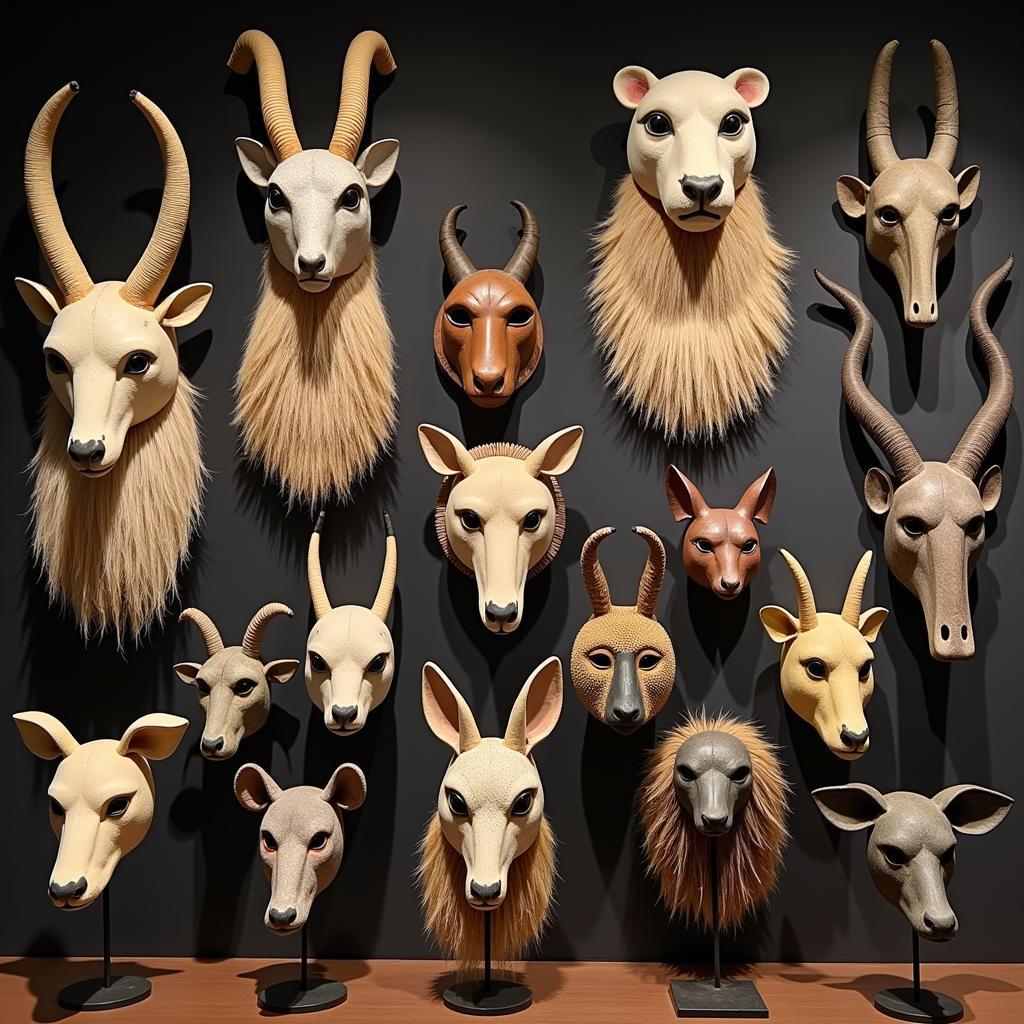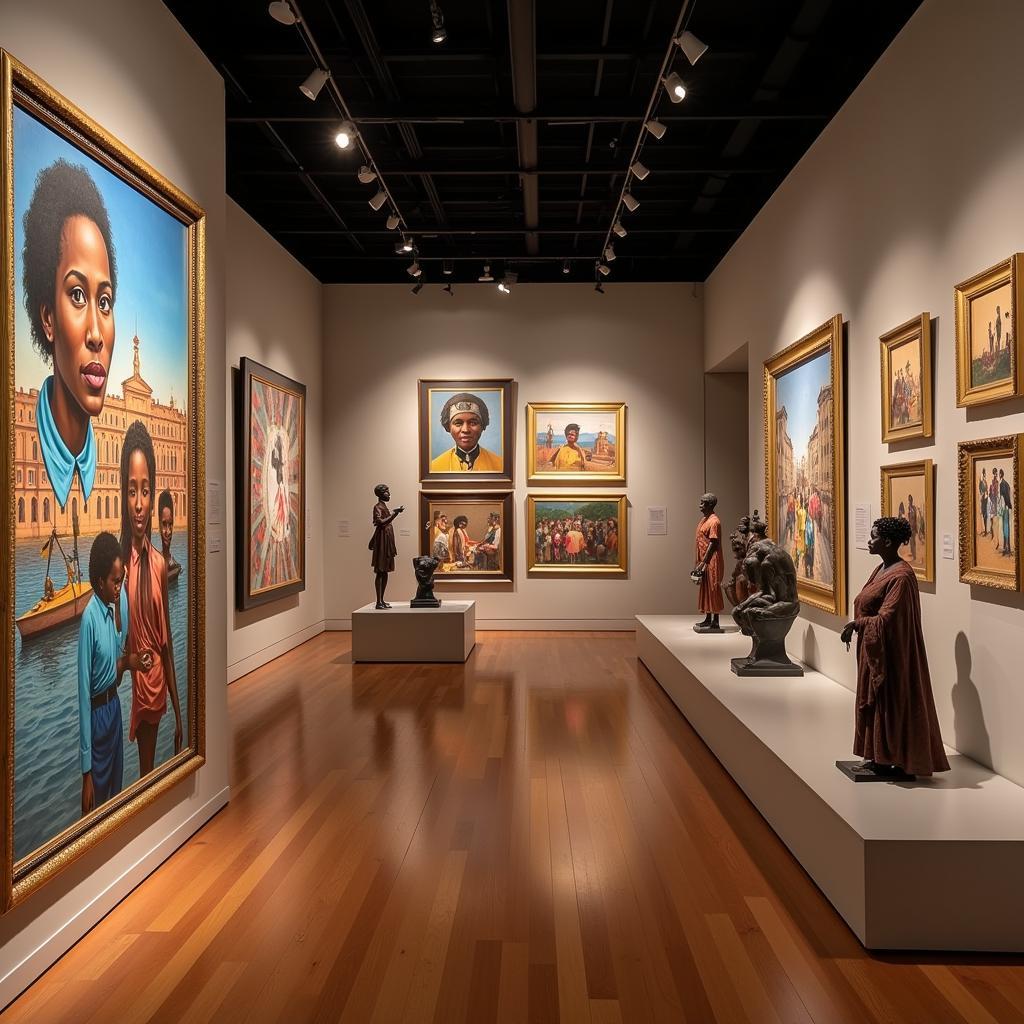African Animal Masks and Their Meanings: Unmasking the Mysteries
African animal masks, with their vibrant colors, intricate carvings, and powerful presence, are much more than mere decorations. They are visual representations of profound cultural beliefs, ancestral spirits, and social structures, intricately woven into the fabric of African societies for centuries.
 African Animal Mask Ceremony
African Animal Mask Ceremony
Delving into the World of African Masks
Across the vast and diverse continent of Africa, masks hold a significant place in numerous cultural and spiritual practices. From initiation ceremonies and rituals to social celebrations and performances, these masks serve as powerful conduits between the physical and spiritual realms. They embody ancestral spirits, deities, and mythical creatures, each imbued with symbolic meanings and significance.
 African Mask Carving Workshop
African Mask Carving Workshop
The Significance of Animals in African Masks
The animal kingdom plays a central role in African cultures, and this reverence is reflected in the masks. Animals are often seen as totems, representing specific clans or families. They are also believed to possess unique powers and characteristics that can be invoked or appeased through the wearing of masks. For instance, the lion, often associated with strength and leadership, may be represented in masks used in ceremonies related to power and authority.
Common African Animal Masks and their Interpretations
Here are some of the most common animals represented in African masks and their associated meanings:
- Elephant: Symbolizing wisdom, strength, and power, elephant masks are often used in leadership and decision-making ceremonies.
- Lion: As the king of the jungle, the lion represents courage, royalty, and justice. Masks featuring lions are often used in rituals related to social order and justice.
- Buffalo: Representing abundance, fertility, and protection, buffalo masks are often used in agricultural ceremonies and rituals.
- Antelope: Known for their grace and agility, antelope masks are often associated with femininity, beauty, and dance.
- Monkey: Often portrayed as tricksters or messengers between the human and spirit worlds, monkey masks are used in a variety of ceremonies, including storytelling and entertainment.
 African Mask Display Museum
African Mask Display Museum
Beyond the Surface: Interpreting African Masks
It’s important to remember that the meaning of a mask can vary depending on the specific cultural context, the materials used, the colors employed, and the accompanying rituals.
For example, a mask with a fierce expression might be used to intimidate enemies, while a mask with a serene expression might be used in healing ceremonies. The materials used to create the mask can also hold significance; for example, a mask made from rare wood might be considered more powerful than one made from common materials.
Exploring the Cultural Richness of African Art and Culture
African art and culture offers a captivating journey into the heart of diverse traditions, beliefs, and artistic expressions. From the vibrant masks to the intricate carvings, each piece tells a story, reflects a belief, and connects the present to the rich tapestry of the past.
Preserving the Legacy: The Importance of Understanding African Masks
African animal masks offer a window into the rich and complex cultures from which they originate. By understanding the symbolism and significance of these masks, we can gain a deeper appreciation for the artistic traditions, spiritual beliefs, and social structures of African societies.
African faces crafts offer a tangible connection to the beauty and depth of African art, reminding us of the importance of preserving and celebrating cultural heritage for generations to come.
Conclusion: Unmasking the Beauty and Depth of African Heritage
African animal masks are not merely artifacts of the past; they are living expressions of cultural identity, spiritual belief, and artistic ingenuity. By appreciating their beauty, symbolism, and significance, we can foster a deeper understanding and respect for the rich and diverse cultures of the African continent.


